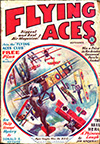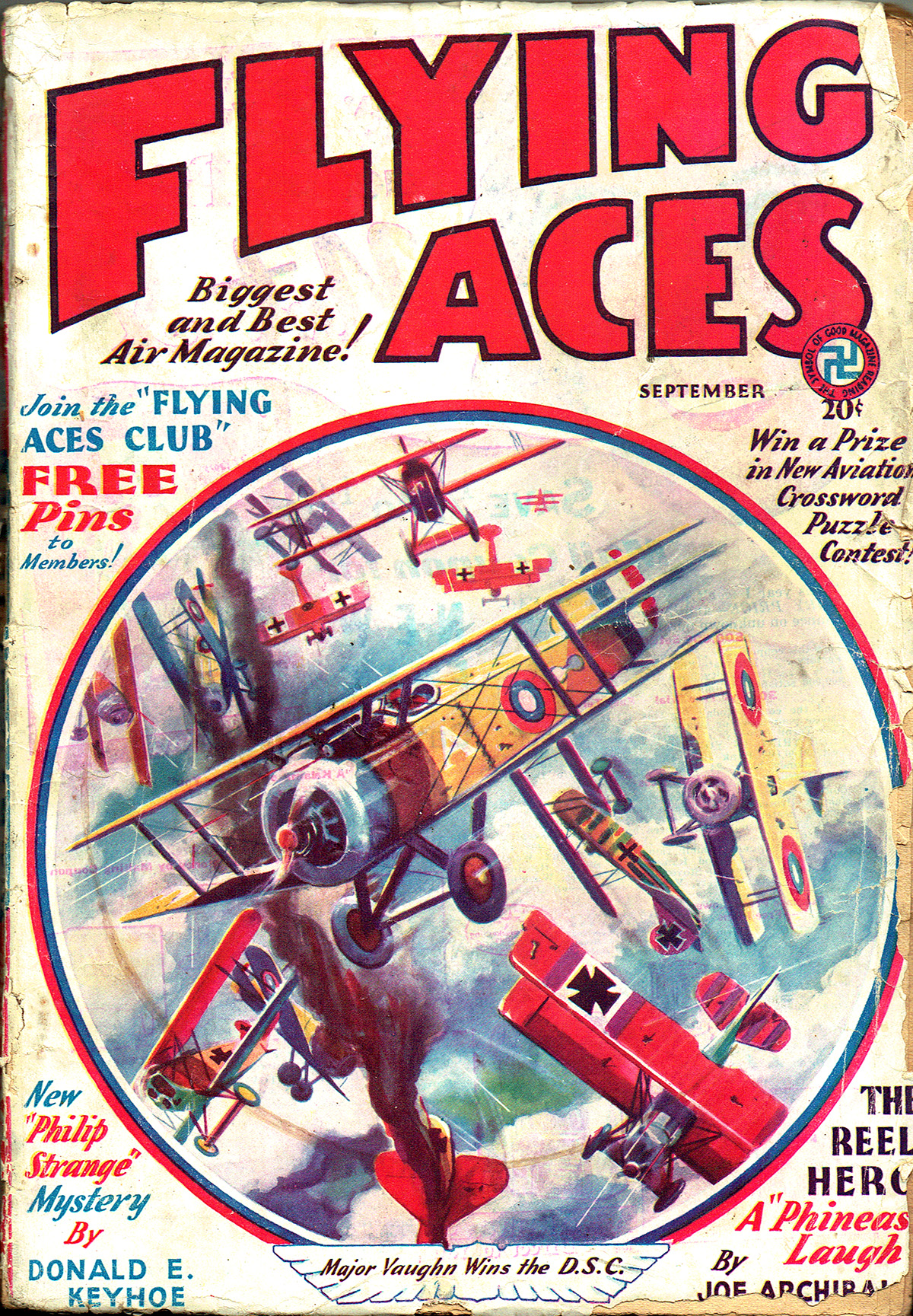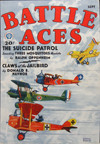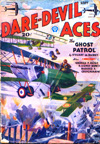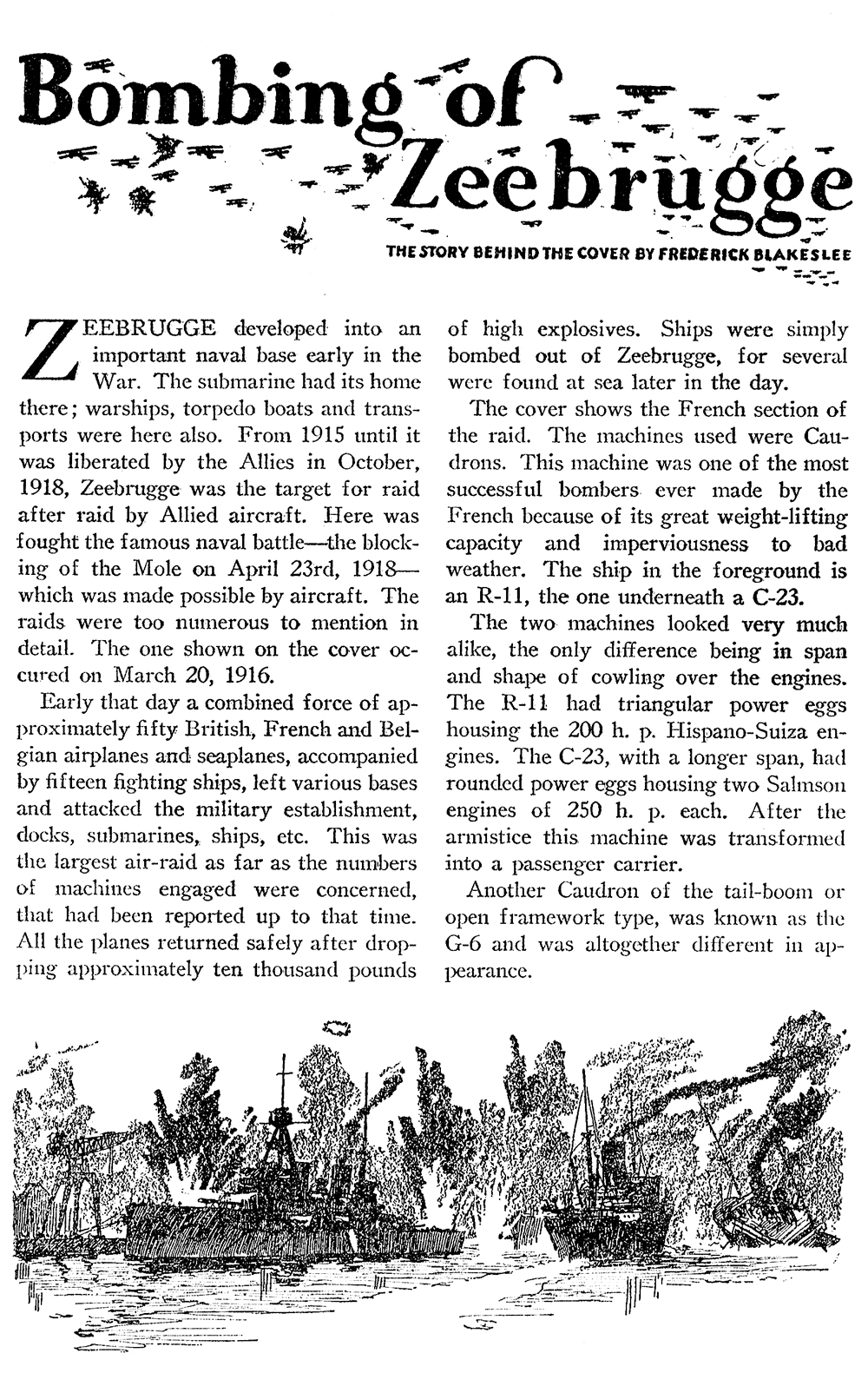How the War Crates Flew: Take-Off Chin Music
FROM the pages of the September 1932 number of Sky Fighters:
Editor’s Note: We feel that this 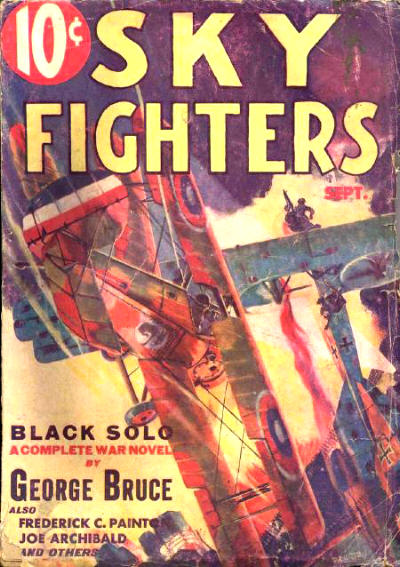 magazine has been exceedingly fortunate in securing R. Sidney Bowen to conduct a technical department each month. It is Mr. Bowen’s idea to tell us the underlying principles and facts concerning expressions and ideas of air-war terminology. Each month he will enlarge upon some particular statement in the stories of this magazine. Mr. Bowen is qualified for this work, not only because he was a war pilot of the Royal Air Force, but also because he has been the editor of one of the foremost technical journals of aviation.
magazine has been exceedingly fortunate in securing R. Sidney Bowen to conduct a technical department each month. It is Mr. Bowen’s idea to tell us the underlying principles and facts concerning expressions and ideas of air-war terminology. Each month he will enlarge upon some particular statement in the stories of this magazine. Mr. Bowen is qualified for this work, not only because he was a war pilot of the Royal Air Force, but also because he has been the editor of one of the foremost technical journals of aviation.
Take-Off Chin Music
by Robert Sidney Bowen (Sky Fighters, September 1932)
“CHUCK†SEAVER, two fisted Skipper of the 56th Pursuits, legged into the cockpit of his Camel, rammed the throttle open wide, and went thundering across the drome to zoom up over the bordering trees. . . .
How many times have you read that in a yarn? Sure, plenty! But how many times have you actually seen it done in real life? You’re right, never! What’s that? . . . why not? Well, listen, Fledgling, next time the old man lets you take the car out for a spin, just shift into low and jam the accelerator all the way to the floorboards and see what happens! Sure, if you don’t tear the gears out, the car will stall on you anyway. Of course there are no transmission gears on a plane, but to shoot a full load of hop to an airplane engine from a standing start would cause it to konk out every time.
And, as a matter of fact, there were several things for Chuck to do before he took off. What about revving up his engine to see that the oil and engine temperature was okay? What about signaling to the grease-balls to pull the chocks away from in front of the wheels? And what about taking a look at the wind-sock to see which direction was correct for a take off? And what about a lot of things?
But that’s the idea of this month’s meeting. That question-asking Fledgling is here again, and he’s just loaded up to the eyes with questions. He shot ’em along to me air-mail, and I’ve got ’em all here. What he wants to know is all about the trick hobbies, hunches and superstitions, etc., of pilots during the war. And as a lot of you other clucks asked the same thing, I suppose I might just as well begin my chin-music right here and now.
Of course I can only give you some of the high points. If I were to chin about all the idiosyncrasies of pilots, I’d be chinning until the next Armistice. War pilots, you know, were a funny breed, so you’ll have to take it or leave it.
But to get started, let’s begin with a peelot having coffee, and maybe a small shot of cognac in the mess before taking off on a dawn patrol.
Well, it’s time to go, so he wanders out to his ship on the line. The mecs have got the engine started, and the prop is ticking over nice and easy like. Our peelot has on his Sidcot suit. You know, one of them teddy-bear things all lined with wool. If it’s winter he’s probably wearing knee-high, rubber-soled sheep skin boots. And may be he’s got a scarf wrapped around his neck. And if he’s going to do a high patrol he’s wearing silk gloves under his leather flying gloves. Real silk gloves (like Mother wears to the theatre) are about the warmest-things there are for the hands. Maybe he’s got his helmet and goggles on, or maybe he’s carrying them in his hand.
And so he gets to his ship. First he takes a look at the elevator and rudder wires just to make sure they’re okay. A friend of mine in France used to spit over the rudder for good luck after he’d finished such an examination. Then the peelot puts on his helmet and goggles and makes sure the helmet strap is fastened nice and snug. And then he climbs aboard, and fastens the safety belt. Some pilots used just the regular safety belt that went around the waist. But others also used safety belts that went up over the shoulders. The idea was so that they would be held in the seat, and their eyes still on a level with the gun sight, when they went over on their backs in a scrap.
OF COURSE, before the pilot left the mess he made sure that he did not have any papers or things in his pockets that would be of value to the enemy in case he was forced down and taken prisoner. But to make doubly sure, a non-com goes to every pilot sitting in his plane and asks him if he has forgotten to look through his pockets.
And now that the peelot is seated in the ship, he takes a look to make sure that his ammo belts are fed into his Vickers gun in okay style. Then he grabs the loading handle (often called cocking handle) and loads the guns. If he has a Lewis on the top wing (when flying an old S.E. 5), he makes sure that it is loaded. And then he pulls up the handle of the oil reservoir of his gun gear (see July issue of SKY FIGHTERS). The idea of that, of course, is to build up pressure in the secondary pipe line so that his guns will fire when he presses the trigger trips on his joystick.
Now, some pilots used to use the well known ring sight for aiming, while others used what was known as the telescopic sight. A long telescope, maybe twelve or fifteen inches, mounted right between the guns. The guns are set to converge with it, according to the likes of the pilot. By that I mean that some pilots want their bullets to meet with the line of sight at one hundred yards, some one hundred and fifty, and some two hundred yards, etc. It all depends upon the wishes of the pilot in question.
What’s that? What am I talking about? Well, listen. You have a gun mounted on the right side of the engine cowling. And you have a gun mounted on the left. Now naturally you want those two paths of bullets to come together at a certain point so that there will be one big burst going into your target. And so the left gun is pointed a bit to the right, and the right gun is pointed a bit to the left. And the ring sight or telescopic sight is set right in the middle between the two. Now, the distance from the muzzles of the guns that you want those two paths of bullets to meet is simply regulated by the amount you set your guns to the left or right, as the case may be. Now don’t get the idea that the guns are re-set for every flight. When the pilot first gets his plane and tests it out, he has the guns mounted the way he wants them, and then they stay that way. Now do you get the idea?
BUT to get back to this telescopic sight. When the plane is on the ground, there is a little leather cup that can be fitted over the two ends of the telescopic sight so that the lenses will be kept clean. Of course the pilot takes them off. Sometimes only the rear lens is covered.) And then, to make sure the lens is all nice and polished, the pilot takes a silk stocking tied to the top of his flying helmet and polishes the lens.
Oh? So you thought war peelots used to tie a silk stocking to the top of their helmets just to look trick, eh? Well, maybe that was part of the idea. But that silk stocking came in plenty useful many times. One use was to clean the telescopic sight lens, as I just related. But the main use was to wipe off your goggles when they got spattered up with oil when you were in the air. In other words, it was just a handy cleaning rag always within reach because it was trailing off the top of your helmet.
What’s that? Where did war pee-lots get silk stockings? Now listen, Fledgling! They bought them in a store. Or maybe a peelot’s sister sent him one of her old ones in a Xmas box. Or maybe . . . well, never mind. You’ll find out soon enough in the next war!!
And now the peelot is fastened in, his guns are okay, and the telescopic sight is cleaned, and the handle of the oil reservoir has been pulled up. So next he moves the rudder bar and waggles the stick just to make sure that there isn’t any slack in the controls that has developed over night.
Then he signals to the waiting mechanics. A couple of them brace themselves against the leading edge of both the right and left lower wings. A third drapes himself over the fuselage just where it is joined by the tale plane. And the peelot pulls the stick all the way back to get the elevators tilted up as far as they will go. Of course the chocks are still in front of the wheels. Then the pilot eases the throttle forward slowly until the engine is roaring full out. And as he does that he looks at his various instruments to see that everything is functioning in proper style. He just lets the engine roar full out for say half a minute, and then pulls the throttle back.
NOW he is set to take off. (Of course we assume that his instruments showed everything to be okay when he revved up the engine.)
If it is a Flight patrol, the leader goes first. Then the next in rank, and then the next, and the next, and so forth. Sometimes they all taxied out to formation position on the field and took off together. But most times the field was too small for that, and they took off one at a time, and formed formation at a certain pre-determined height above the field, or a nearby village.
But we’ll let this peelot we’re chinning about take off by himself.
The grease ball who has been draping his manly form over the tail moves himself, and the pilot waves his hand in a left to right motion. That means . . . pull the chocks away. The mechanics do that, and then, if the plane is already headed in a correct take-off position (into the wind), the pilot gives the grease balls a chance to step clear and then pushes the throttle forward slowly and pushes the stick forward to get his tail up . . . and away he goes. Now, if he isn’t headed into the wind he taxies out, with the help of the grease balls hanging onto the wings, and swings around into a correct takeoff position. But don’t let fiction story writers kid you . . . the peelot doesn’t slam his throttle home! He eases it forward and gives the engine a chance to pick up full revs without tearing itself apart.
And, incidentally, the pilot seldom takes off right from the hangar line. Even if the wind is blowing toward him, he taxies out a bit. Why? Well, because an open hangar is right behind him, and when he takes off he blows half the drome right back into that hangar and all over any planes that might be there. And when he does that, why the C.O. usually has seventeen fits and chews his ear off when he gets back.
Yes, yes, I know, I know . . . you want to hear about hunches and hobbies, etc. Well, the C.O. of this mag is handing me some mighty tough looks. Guess he wants to get a word in about something that is interesting, so I’ll have to make it short.
The first is . . . the old superstition about lighting three cigarettes on a match. Bunk! But we used to like to live up to it just for the heck of it. Some other war peelot may call me a liar for that crack . . . but it really was just a superstition we liked to follow. It originally started in the Boer war. The English Tommies were short of matches, so several of them used to light their pipes on the same match. For no reason at all the Boer snipers opposite them used to try and pick off the third guy who lighted his pipe. And that’s how it came to be an omen of tough luck when a soldier took the third light off a match.
Sometimes you used to get hunches that it wasn’t so hot to fly on a particular day. Most times you just lived it down and went ahead with the job to be done. I got a hunch like that once and went just the same. Well, the engine konked out, a skyful of smoke belched out of the engine cowling, and I forced landed and wrapped myself around a tree. Well, was it because of the hunch? It was . . .but in this way. I didn’t want to fly that day, so I was looking for trouble . . . all nerved up, and all that sort of thing. And when you get that way, something usually does happen, believe you me.
A pal of mine once got a no-flying hunch on a day in training school when he had to take a test in target shooting. He was all goose pimples about it, and asked me to double for him. Well, it wasn’t an important test (no instructor around to watch), so I said, “Sure.†And I went up and shot off the rounds for him. When the score of hits was checked, and his instructor got hold of it, said instructor bawled the pants off him for being such a lousy marksman. So that gives you an idea of how good I was.
All right, C.O., all right . . . just a few more words. And they are about mascots, or lucky pieces, pilots used to carry. The famous ones were the two little French wool dolls, Nanette and Babbette. And of course there was the face of the girl-friend stuck on the crystal of your wrist watch. And maybe, if you were brave at some time, a pretty little pink garter, or maybe a stuffed teddy bear, or a monkey, or a doll, or most anything that you could lay your hands on. In other words, pilots used to go visiting and bring back anything that wasn’t nailed down and use them as luck charms.
And of course, there . . . ouch! See you again, Fledgling! The C.O.’s got my shirt tail, and pulling hard. S’long!







